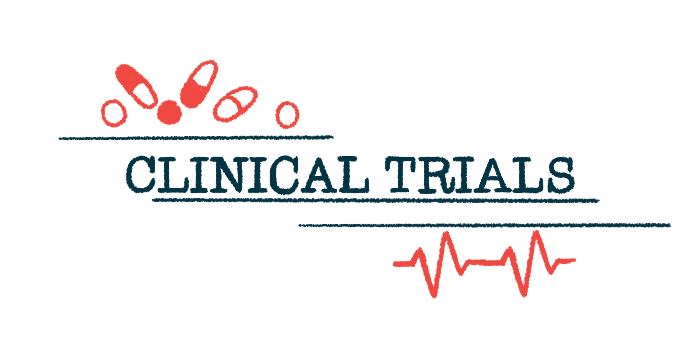Semaglutide shows liver benefits in Phase 3 MASH trial
Novo Nordisk expects to file for U.S. approvals in 2025

Weekly injections of semaglutide, a medication sold in the U.S. under brand names including Ozempic and Wegovy to treat type 2 diabetes and obesity, reduced liver fat and scarring in adults with metabolic dysfunction-associated steatohepatitis (MASH), a severe form of fatty liver disease.
The liver benefits were seen in nearly 1.5-year results from the first part of the ongoing global Phase 3 ESSENCE clinical trial (NCT04822181). Developer Novo Nordisk presented the findings at The Liver Meeting, hosted by the American Association for the Study of Liver Diseases Nov. 15-19 in San Diego.
Novo Nordisk plans to file a regulatory application in the first half of 2025 seeking semaglutide’s approval in the U.S. for treating MASH. Meanwhile, the fully enrolled ESSENCE study continues with its second part, which will look at long-term clinical outcomes until 2029.
“We are pleased by the ESSENCE data” supporting the “growing clinical evidence” that semaglutide benefits people with MASH and other chronic conditions, Anna Windle, PhD, senior vice president of clinical development, medical and regulatory affairs at Novo Nordisk, said in a company press release. “These data are a cornerstone in our research and build on our understanding of how MASH and cardiometabolic conditions like type 2 diabetes, obesity, dyslipidemia [abnormal fat levels in the blood], and high blood pressure are interrelated.”
Metabolic dysfunction-associated steatotic liver disease (MASLD), occurs when abnormal amounts of fat accumulate in the liver in the presence of cardiometabolic risk factors such as type 2 diabetes, obesity, high blood levels of cholesterol or other fats, or high blood pressure.
Liver benefits and risk management
MASLD, previously known as nonalcoholic fatty liver disease, is very common and usually doesn’t cause any overt problems. In some cases, it will progress to MASH, a more severe stage previously called nonalcoholic steatohepatitis (NASH) in which inflammation and scar tissue buildup (fibrosis) can give way to serious liver damage.
About 20% of all MASH patients eventually progress to cirrhosis, or irreversible liver damage that affects the organ’s function.
Semaglutide mimics the activity of glucagon-like peptide-1 (GLP-1), a naturally occurring hormone involved in helping control blood sugar and appetite, by binding to and activating GLP-1 receptor protein.
Novo Nordisk sells three semaglutide versions in the U.S.: an under-the-skin, or subcutaneous, formulation called Ozempic and an oral formulation called Rybelsus to treat type 2 diabetes, and the subcutaneous formulation Wegovy for certain adults who are overweight or obese.
Accumulating evidence suggests that semaglutide may be of benefit for managing MASH due to its ability to help manage cardiometabolic risk factors, ease inflammation, lower liver fat, and prevent fibrosis progression.
ESSENCE is testing the effects of once-weekly subcutaneous injections of semaglutide (2.4 mg) against a placebo in about 1,200 adults with MASH and moderate to advanced liver fibrosis. Participants are self-administering their assigned treatment on top of standard care for 240 weeks, or about 4.5 years.
In Part 1, the goal was to examine the effects of semaglutide on liver tissue biopsy findings after about 1.5 years of treatment among the first 800 participants.
There were two primary goals: to assess the proportion of patients achieving MASH resolution without worsening liver fibrosis and the proportion of patients experiencing significant fibrosis reductions without MASH worsening,
Newly presented results showed that both of those goals were met, with a significantly higher proportion of patients in the semaglutide group achieving either of those outcomes relative to those given a placebo.
After 1.5 years, 62.9% of patients on semaglutide achieved MASH resolution without fibrosis worsening, compared with 34.1% of those on placebo. More than one-third (37%) of those on semaglutide had significant reductions in fibrosis without worsening MASH, compared with 22.5% of those in the placebo group.
More participants on semaglutide than on placebo achieved both MASH resolution and liver fibrosis reductions (32.8% vs 16.2%), meeting a secondary trial goal.
Other secondary measures also favored semaglutide, with reductions in blood levels of certain liver damage markers and in scores on the Enhanced Liver Fibrosis (ELF), a non-invasive test that considers levels of three blood biomarkers to estimate liver fibrosis.
Semaglutide’s safety profile was consistent with that reported for this dose in trials involving other patient populations, according to Novo Nordisk.
“These initial data … demonstrated that semaglutide 2.4 mg slowed MASH progression and reversed existing liver damage,” said Arun Sanyal, MD, the study’s principal investigator and the director of Virginia Commonwealth University’s Stravitz-Sanyal Institute for Liver Disease and Metabolic Health. “The ESSENCE data may represent key findings for patients in the treatment of MASH, which is estimated to affect about one in 20 adults in the US.”
The goal of ESSENCE’s Part 2 is to determine the effects of semaglutide on liver-related clinical events relative to placebo after about 4.5 years. It’s expected to finish in 2029.






